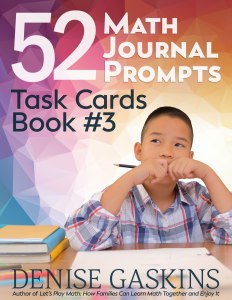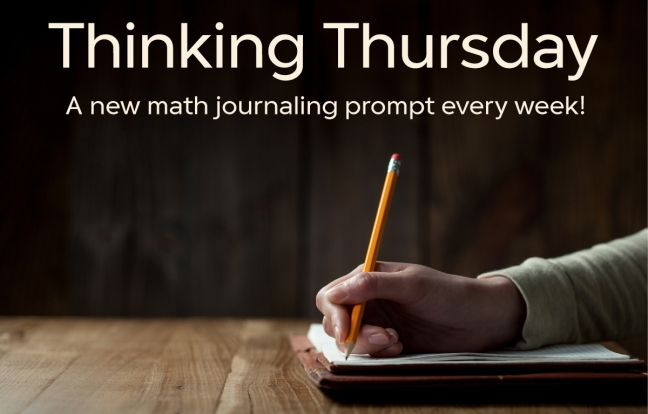Writing to Learn Math: Research prompts help students view math as a human endeavor.
Do you want your children to develop the ability to reason creatively and figure out things on their own?
Help kids practice slowing down and taking the time to fully comprehend a math topic or problem-solving situation with these classic tools of learning: Notice. Wonder. Create.
Notice: Look carefully at the details of the numbers, shapes, or patterns you see. What are their attributes? How do they relate to each other? Also notice the details of your own mathematical thinking. How do you respond to a tough problem? Which responses are most helpful? Where did you get confused, or what makes you feel discouraged?
Wonder: Ask the journalist’s questions: who, what, where, when, why, and how? Who might need to know about this topic? Where might we see it in the real world? When would things happen this way? What other way might they happen? Why? What if we changed the situation? How might we change it? What would happen then? How might we figure it out?
Create: Create a description, summary, or explanation of what you learned. Make your own related math puzzle, problem, art, poetry, story, game, etc. Or create something totally unrelated, whatever idea may have sparked in your mind.
Math journaling may seem to focus on this third tool, creation. But even with artistic design prompts, we need the first two tools because they lay a solid groundwork to support the child’s imagination.
How To Use a Research Prompt
Where did math come from? Who thought up the rules? How are the ideas and methods we study used in actual life?
Research prompts help students view math as a human endeavor, something that grew bit by bit as people in many countries across many centuries struggled to understand their world.
While most research journaling is informal, older students may wish to venture into writing more formal reports. Here they can practice essay skills like formulating a thesis statement (a concise summary of the student’s main idea) and organizing facts and information to prove their point.
Be sure to allow plenty of time for students to respond to research-based journaling prompts.
Journaling Prompt 136: Earth’s Belt
Suppose you could tie a rope belt around the earth’s equator. How long would it be?
If you added one meter to the length of the belt, how high would it be above ground? Could an ant crawl under it? Or a mouse?
Now suppose you wanted a new rope that’s one meter high all the way around. How much longer than the original belt would that have to be?
Hint: The earth is not quite a sphere because it bulges a bit around the equator and is flatter at the poles.
* * *
 This is an excerpt from Journaling Task Cards Book 3, available as a digital printable activity guide at my bookstore. Read more about my playful math books at my publisher’s Tabletop Academy Press website.
This is an excerpt from Journaling Task Cards Book 3, available as a digital printable activity guide at my bookstore. Read more about my playful math books at my publisher’s Tabletop Academy Press website.
Special Offer: Would you like to access a growing archive of Thinking Thursday prompts and other activity ideas as convenient printable pdf downloads, ready to print and play with your kids? Join me on Patreon for mathy inspiration, tips, printable activities, and more.
“Thinking Thursday: Earth’s Belt” copyright © 2024 by Denise Gaskins.
